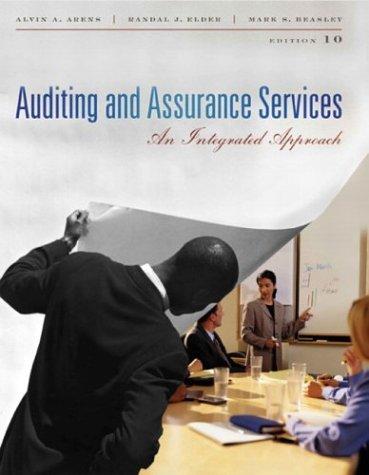Question
Below are the criteria that Partners A, B, and C negotiated when they created their partnership. Profits should be allocated in the order of the
Below are the criteria that Partners A, B, and C negotiated when they created their partnership. Profits should be allocated in the order of the criteria provided. All criteria should be satisfied fully, with any resulting deficiency or remaining profit being allocated according to the P&L percentages that the partners negotiated.
Partner A: $50,000 contributed, 35% P/L percentage
Partner B: $50,000 contributed, 35% P/L percentage
Partner C: $1,500,000 contributed, 30% P/L percentage
Partners A and B receive salaries of $100,000 each.
Partner A receives a $50 bonus for each 90+ hour week during busy season.
If Partner C works over 350 hours in a calendar year, he will receive a bonus of $20,000.
Partners A and B receive 5% interest on their beginning capital balances. Partner C will receive 1% interest on his beginning capital balance above $1,200,000.
Partner A receives a bonus of 5% of revenue from clients they bring to the firm.
All partners receive a $5,000 bonus for each new staff hire that completes the CPA test prior to starting with the firm and a $3,000 bonus for each employee that completes the CPA within the first year of employment.
Partner B receives a bonus of 3% of revenue from clients they bring to the firm.
Partner A receives 3% of tax related revenue in excess of $350,000
Partner B receives 5% of audit related revenue in excess of $400,000.
Partner C receives a bonus of 1% of revenue from clients he brings to the firm.
Partners A and B can receive 50% tuition reimbursement should they bring 8 or more new clients to the firm in a calendar year.
Partners A and C get a bonus of $1,500 each if fewer than 50 tax returns are extended in any given year.
Below are the partnerships results of operations for the first 2 years of operations:

Required
Allocate each years profits according to the criteria above.
Year 1 - Total Profit - Partner A 90+ hour work weeks during busy season - Partner C hours w orked during calendar year - Revenue from clients brought in by Partner A - New hires passing CPA exam before start date - New hires passing CPA exam in first year of employment - Revenue from clients brought in by Partner B - Tax related revenue - A udit related revenue - Revenue from clients brought in by Partner C - New clients brought in by Partner A - New clients brought in by Partner B - Tuition paid by Partner A - Tuition paid by Partner B - Total tax return extensions fled Year 2 - Total Profit - Partner A 90+ hour w ork weeks during busy season - Partner C hours w orked during calendar year - Revenue from clients brought in by Partner A - New hires passing CPA exam before start date - New hires passing CPA exam in first year of employment - Revenue from clients brought in by Partner B - Tax related revenue - A udit related revenue - Revenue from clients brought in by Partner C - New clients brought in by Partner A - New clients brought in by Partner B - Tuition paid by Partner A - Tuition paid by Partner B - T otal tax return extensions filedStep by Step Solution
There are 3 Steps involved in it
Step: 1

Get Instant Access to Expert-Tailored Solutions
See step-by-step solutions with expert insights and AI powered tools for academic success
Step: 2

Step: 3

Ace Your Homework with AI
Get the answers you need in no time with our AI-driven, step-by-step assistance
Get Started


